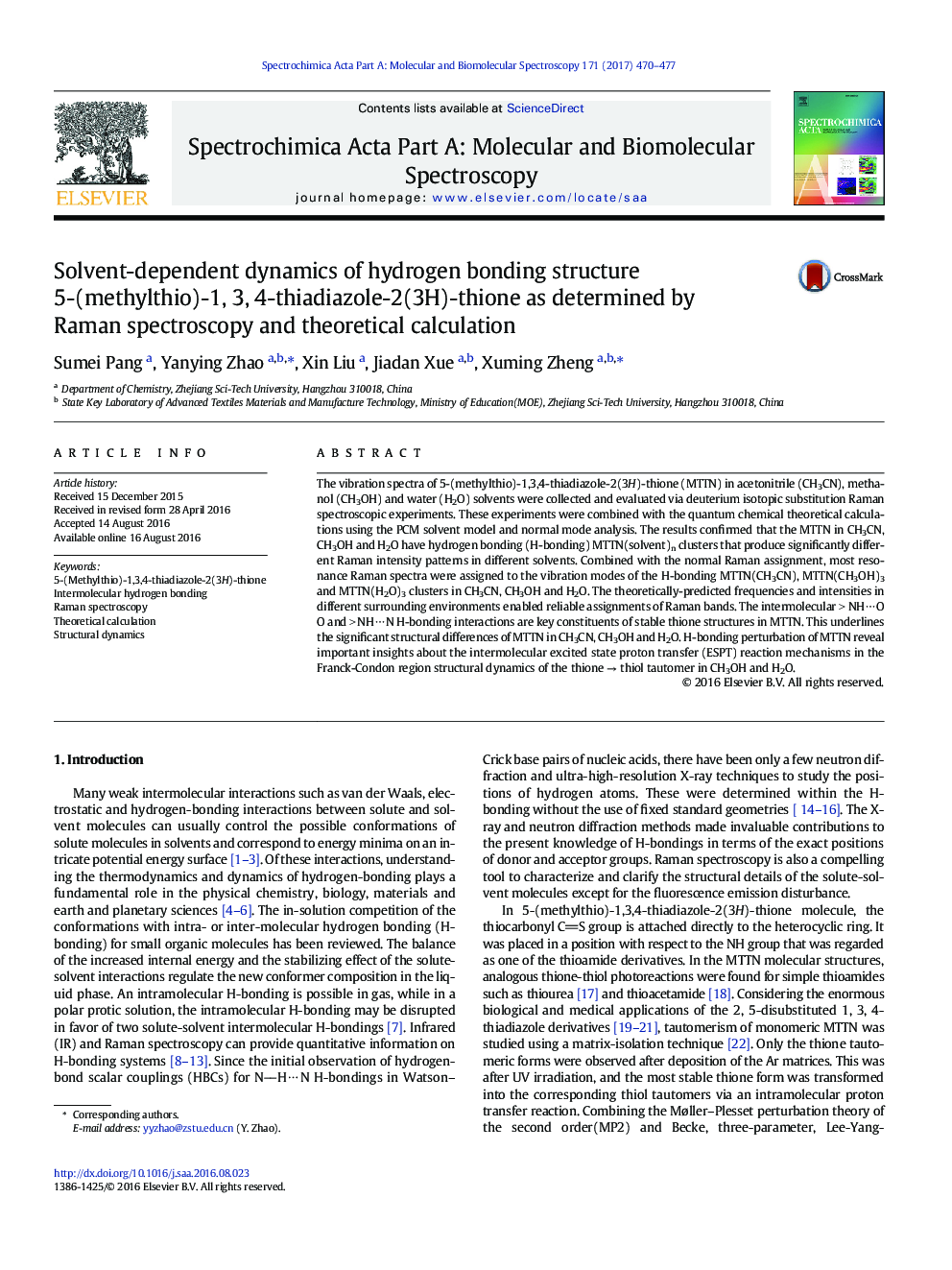| Article ID | Journal | Published Year | Pages | File Type |
|---|---|---|---|---|
| 1230037 | Spectrochimica Acta Part A: Molecular and Biomolecular Spectroscopy | 2017 | 8 Pages |
•The ground state structures of MTTN in solvents have been determined via Raman spectroscopic experiments and DFT calculation.•The MTTN in different solvents can be characterized as MTTN(solvent)n (solvent=CH3CN, CH3OH and H2O; n=1, 2, 3) clusters.•Hydrogen bond (H-bond) interactions between MTTN and solvents significantly contribute to different Raman intensity patterns.•The intermolecular >NH ⋯ O and >NH ⋯ N H-bond underlines an significant spectra differences of MTTN in CH3CN, CH3OH and H2O.
The vibration spectra of 5-(methylthio)-1,3,4-thiadiazole-2(3H)-thione (MTTN) in acetonitrile (CH3CN), methanol (CH3OH) and water (H2O) solvents were collected and evaluated via deuterium isotopic substitution Raman spectroscopic experiments. These experiments were combined with the quantum chemical theoretical calculations using the PCM solvent model and normal mode analysis. The results confirmed that the MTTN in CH3CN, CH3OH and H2O have hydrogen bonding (H-bonding) MTTN(solvent)n clusters that produce significantly different Raman intensity patterns in different solvents. Combined with the normal Raman assignment, most resonance Raman spectra were assigned to the vibration modes of the H-bonding MTTN(CH3CN), MTTN(CH3OH)3 and MTTN(H2O)3 clusters in CH3CN, CH3OH and H2O. The theoretically-predicted frequencies and intensities in different surrounding environments enabled reliable assignments of Raman bands. The intermolecular > NH ⋯ O and > NH ⋯ N H-bonding interactions are key constituents of stable thione structures in MTTN. This underlines the significant structural differences of MTTN in CH3CN, CH3OH and H2O. H-bonding perturbation of MTTN reveal important insights about the intermolecular excited state proton transfer (ESPT) reaction mechanisms in the Franck-Condon region structural dynamics of the thione → thiol tautomer in CH3OH and H2O.
Graphical abstractMTTN(solvent)n clusters. Hydrogen bonds are key constituents of stable thione structure of MTTN, and external perturbations of hydrogen bond may reveal important insights about the intermolecular excited state proton transfer (ESPT) reaction mechanisms in the Franck-Condon region structural dynamics of thione → thiol tautomer in CH3OH and H2O.Figure optionsDownload full-size imageDownload as PowerPoint slide
